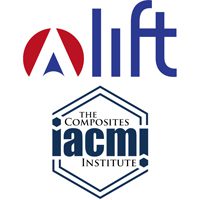NEWS & EVENTS
Stronger (and Lighter) Together: LIFT, IACMI Collaboration Begins

 Senior Editor, Michael C. Anderson
Senior Editor, Michael C. Anderson
On January 13 and 14, IACMI, the Knoxville, TN-based Institute for Advanced Composites Manufacturing Innovation, held an all-members meeting to discuss its new partnership with LIFT (Lightweight Innovations for Tomorrow) up in Dearborn, MI. Back in September 2015, Vice President Joe Biden first announced that IACMI, also called the Composites Institute, would be opening a second location, collocated with LIFT in the latter’s newly refurbished facility in Detroit’s Corktown neighborhood.
Both IACMI and LIFT are hubs of the Obama administration’s National Network for Manufacturing Innovation (NNMI). The meeting highlighted IACMI roadmapping efforts, partnerships, projects and advancements in key technology areas. The members were greeted by MI Gov. Rick Snyder, 12th District Congressional Rep. Debbie Dingell, and Detroit Mayor Mike Duggan.
LIFT Executive Director Lawrence Brown, IACMI CEO Craig Blue and IACMI Associate Director Raymond Boeman explained to Advanced Manufacturing Media how their collaboration came about and why it’s necessary.
Together—Again
The first thing they make clear is that even though all of the NNMIs are relatively new and that LIFT and IACMI were created separately and are funded and overseen by separate federal entities—the US Department of Defense for LIFT and the Department of Energy for IACMI—they are anything but strangers.
“As individuals we’ve been collaborating for a long time,” said IACMI’s Boeman. “[welding institute] EWI and Oak Ridge National Laboratories has had collaborations, as have the universities involved—Ohio State and Michigan State. Alan Taub, now the CTO of LIFT—we were working on a collaboration prior to any of these NNMI solicitations came out.”
“When we were looking at the Corktown facility as a possible headquarters, in the back of our minds we were thinking about the new IACMI as well,” said LIFT’s Brown. “We realized we had excess capacity for our own needs. And we thought that being collocated with IACMI and bringing them to the area, this makes sense.”
Why, with different materials and different bosses to report to, did it make sense?
A Multi-material Lightweighting Solution
“Because from the automotive side, the challenge of lightweighting is going to need a multi-material solution,” said IACMI’s Blue.
In fact, he said, it makes such sense that the search for lightweighting solutions be across both metals and composites that he was surprised that they were ever separated to begin with. He thought the plan would have been for a single NNMI for multi-material lightweighting, particularly because “we’ve worked with each other for years, all of us.” So when the government announced LIFT and IACMI as separate NNMIs, “we said, ‘that’s fine, we’ll set up independently’ but got back to collaborating together as we as individuals always have.”
“Larry [Brown]’s team have welcomed us to the Corktown facility—it’s just a beautiful relationship, and one that we believe is going to lead us to some real significant impacts in the future,” said Boeman.
Things to Come
They expect to have positive results to share in the coming months and years.
“I think that there are several stories that could come out of this,” said Brown. “From a technology standpoint, as we look to advance manufacturing, I think we’ll be able to come up with a holistic materials solution. Between the two institutes, we’ll be covering the gamut of materials and, as Craig mentioned, there’s going to be a multi-material solution. There’s no single material, whether it’s composite or metallic, that will be a silver bullet for lightweighting.
“For example, one of the questions I’m regularly asked is on the joining side—how do you join a metallic to a composite? To which I reply, ‘stay tuned,’” Brown continued. “We expect to be a resource offering answers to such questions, and being collocated, we’ll be almost a ‘one-stop shop’ for companies seeking solutions.” This, Brown said, will help sustain both NNMIs “after the federal dollars decline or go away.”
Craig Blue pointed out another benefit of working together.
“Innovation happens at the crossroads,” Blue said. “Getting people of different backgrounds to come together is what makes innovation happen—as opposed to, say, coming up with a finished composite automotive component and throwing it a company with no talk of how they are going to put it inside of a pillar and join it to metal. Working hand-in-hand is going to accelerate the innovation.”
Along with technical collaboration, the two organizations plan to work together on training and workforce development programs.
Published Date : 1/15/2016